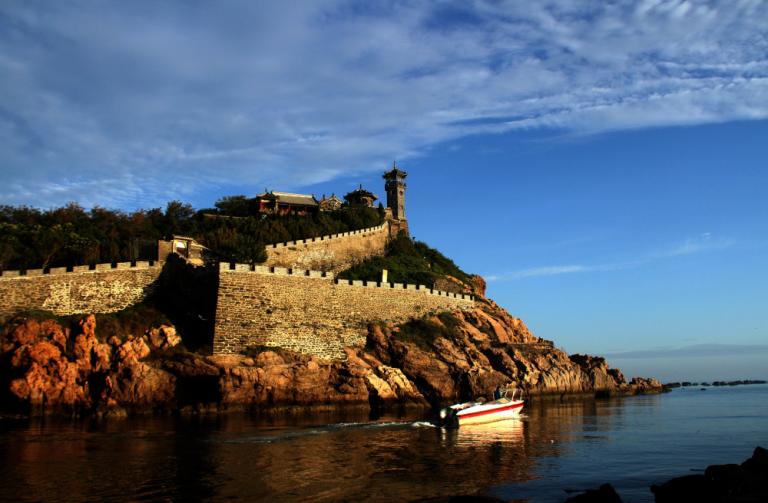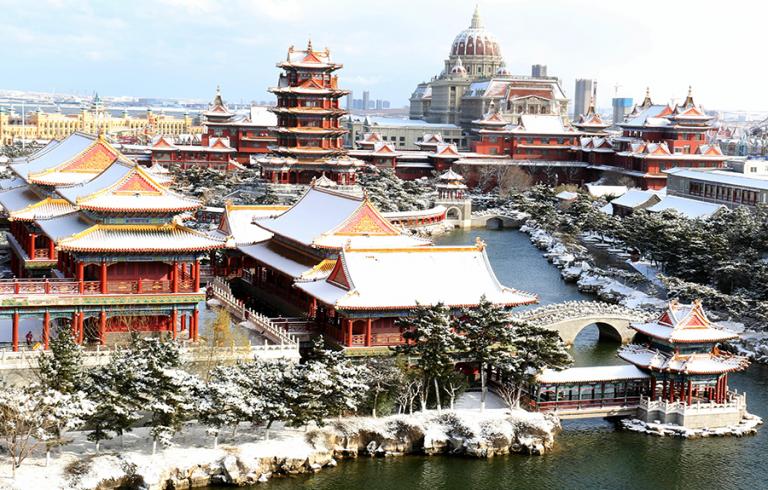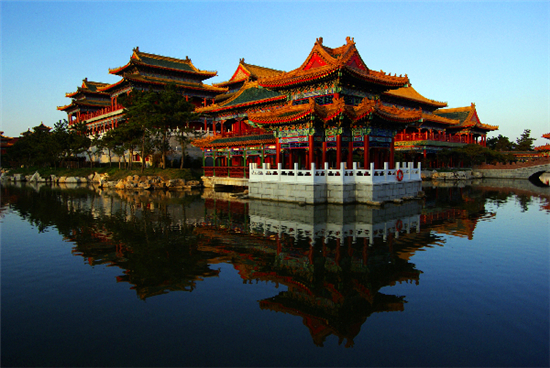Penglai Pavilion
4 min readPenglai Pavilion,seated on the cliff of Danya Mountain close to the seain the north of Penglai City,is a famous coastal tourist site in eastern China’s Shandong Province.
It is listed as one of the four famous towers in China together with Yellow Crane Tower,Yueyang Tower,and Tengwang Pavilion.Having long been known as a fairyland and famousplace for watching mirages,Penglai Pavilion is regarded as the place where immortals inhabited,and thus it was frequently visited for wonder herbs by emperors since Qin and Han dynasties.

Built in 1061 by Governor Zhu Chuyue in the sixth year of Emperor Jiayou of the Northern Song Dynasty,the Pavilion was intended for people to enjoy the sea view.In the 17th year of Wanli of Ming Dynasty,official Li Dai added more buildings around,which together with the Pavilion was called Pavilion complex.In the 24th year of Emperor Jiaqing of Qing Dynasty,the Pavilion was expanded again on the basis of the existing buildings sponsored by local government secretary Yang Fengchang and garrison commander Liu Qinghe to the present complex occupying a construction area of 18,960 square meters.After 1949,the government has appropriated funds many times for its renovation.In 1965,the Pavilion had resumed its original look,reflecting the traditional architectural characteristics of ancient China.
The Pavilion complex occupies a land of 32,800 square meters,a construction area of 18,960 square meters, composed of six buildings and their attached constructions: main hall of Penglai Pavilion, Longwang Palace, Tianhou Palace, Sanqing Temple, Lizu Temple and Mituo Temple. Constructed with double-deck wood, the main hall of Penglai Pavilion is seated on the north, facing the south, with symmetrically built side rooms and wing rooms in front of both east and west sides. Wing rooms perform the role of halls, with hallways linking side rooms and stone stairs running up the Pavilion. Its ground floor measures 14.8 meters in length, and 9.65 meters in width, with winding corridors and 16 columns surrounding allsides. Hung on the front door is a huge horizontal tablet inscribed with three Chinese characters: Penglai Pavilion(Penglai Ge), written by famous calligrapher Tie Bao of the Qing Dynasty.

Three huge stone tablets are embedded in the outside of the north wall of the Pavilion’s ground floor. One reads Blue Sea, Cool Breeze(Bi Hai Qing Feng), written by Lu Qiguang, arenowned Qing calligrapher. Another reads Placid Seawater(Hai Bu Yang Bo), of which theword Bu was struck by a cannonball during the 1894 to 1895 Sino-Japanese war, leavinga visible scar. The other reads the Clear Sea(Huan Hai Jing Qing).
In front of the wing rooms’ north gable wall are three monuments, built during the reigns of Emperors Jiaqing, Daoguang and Guangxu respectively after each renovation or construction of attached buildings. In the west of west-wing room,a 2.3-meter-tall tablet is erected facing the east. Engraved on the tablet is Daoguang’s Notes on “Repairing Penglai Pavilion in Dengzhou”, written with full power and grandeur. Inside the west-wing room, tablets are embedded into the west wall, with four Chinese characters on each, describing the ten scenes of Penglai: Sunrise on the Sea (Ri Chu Fu Sang), Evening Tide under the New Moon(Wan Chao Xin Yue), Countless Jade Fragments(Qian Hu Sui Yu), Ten Thousand Miles of Clear Water(Wan Li Deng Bo), Pavilion in the Air(Xian Ge Ling Kong), Snow Covered Peak(ShenShan Xian Shi), Mist and Clouds(Shi Dong Yan Yun), Fishing and Singing on the Yuliang(Yuliang Ge Diao), Shining Waves in Well(Tong Jing Jin Bo) and Rain Drops from Heaven(Lou Tian Di Run). Another ten tablets of past dynasties are in the west side room, all of which have great historiography and calligraphy values.
The second floor of the Penglai Pavilion is 13.5 meters in length and 8.55 meters in width, surrounded by winding corridors, wooden fencing guardrails and 16 columns. The door opens to the south and windows are opened in the north wall for visitors to look over the sea. Woodenfolding screens are displayed in the north, east and west. Hung above the outer side of the door is a board carved with Blue Sea, Warm Spring (Bi Hai Chun Rong), and the inner side is a board carved with Scenic Spot on the Divine Land(Shen Zhou Sheng Jing). Tie Bao’s powerful handwriting Penglai Pavilion (Penglai Ge) is just hung on the center of north wall, along with Dong Biwu’s inscription and Ye Jianying’s couplets hung on the west wall. The wooden roof beams are painted with colored drawings like Penglai Ten Scenes, Eight Immortals and Bamboos, etc. With sculptures of eight drunken immortals placed in the center and an old-fashioned square table and chairs placed around, the arrangement of the room is just as what was described in the famous legend of “Eight Immortals Crossing the Sea”. It is said that the Eight Immortals(Lu Dongbin, Tie Guaili, Zhang Guolao, Han Zhongli, Cao Guojiu, He Xiangu, Lan Caihe, and Han Xiangzi) got drunk at the Penglai Pavilion and they crossed the sea by different tricks of their own without ships or boats. Their performance hovering over the waves against wind left a popular saying that “like the Eight Immortals crossing the sea, each one showing his or her special feats; each tries to outwit the other”.

Beneath the Pavilion is the bridge said to be the place where the Eight Immortals crossed the sea. East section of the pavilion are Palace of Lucidity(Sanqing Temple), Liizu Temple(Luzumiao),the Tower of Universal Enlightenment(Puzhao lou)and Wave Watching Pavilion(Guanlan ting);west section are Wind sheltering Pavilion(Bifeng ting),the Palace to theGoddess of the Sea(Tianhou gong),and the Palace to the Dragon King(Longwang gong).Thesebuildings,finely arranged and divided,constitute one integrated mass with the Pavilion,which adds glamour to the whole complex.








